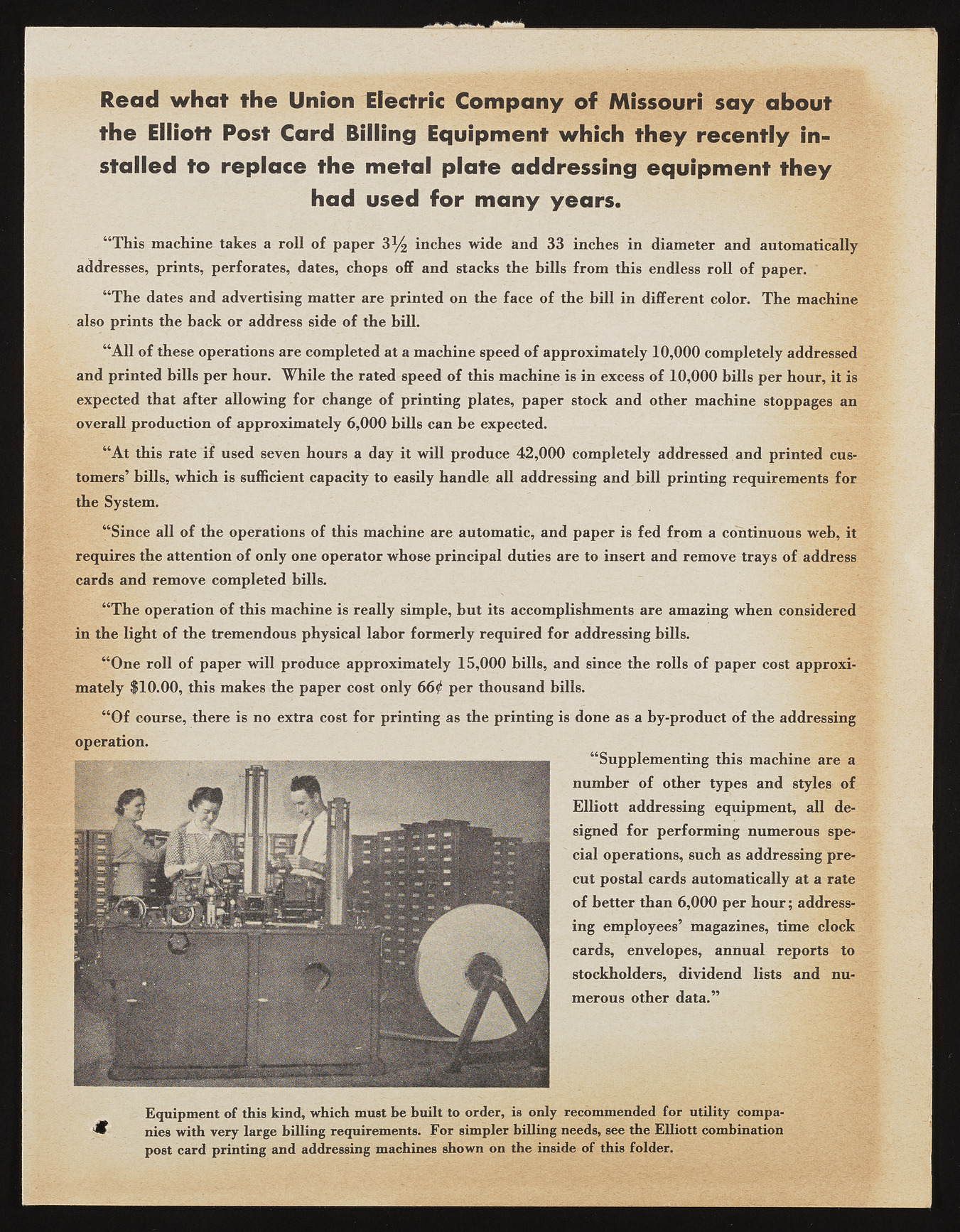Copyright & Fair-use Agreement
UNLV Special Collections provides copies of materials to facilitate private study, scholarship, or research. Material not in the public domain may be used according to fair use of copyrighted materials as defined by copyright law. Please cite us.
Please note that UNLV may not own the copyright to these materials and cannot provide permission to publish or distribute materials when UNLV is not the copyright holder. The user is solely responsible for determining the copyright status of materials and obtaining permission to use material from the copyright holder and for determining whether any permissions relating to any other rights are necessary for the intended use, and for obtaining all required permissions beyond that allowed by fair use.
Read more about our reproduction and use policy.
I agree.Information
Digital ID
Permalink
Details
More Info
Rights
Digital Provenance
Publisher
Transcription
Read what the Union Electric Company of Missouri say about the Elliott Post Card Billing Equipment which they recently installed to replace the metal plate addressing equipment they had used for many years. “ This machine takes a roll of paper 3 ^ inches wide and 33 inches in diameter and automatically addresses, prints, perforates, dates, chops off and stacks the hills from this endless roll of paper. “ The dates and advertising matter are printed on the face of the bill in different color. The machine also prints the back or address side of the bill. “ All of these operations are completed at a machine speed of approximately 10,000 completely addressed and printed bills per hour. While the rated speed of this machine is in excess of 10,000 bills per hour, it is expected that after allowing for change of printing plates, paper stock and other machine stoppages an overall production of approximately 6,000 bills can be expected. “ At this rate if used seven hours a day it will produce 42,000 completely addressed and printed customers’ bills, which is sufficient capacity to easily handle all addressing and hill printing requirements for the System. “ Since all of the operations of this machine are automatic, and paper is fed from a continuous web, it requires the attention of only one operator whose principal duties are to insert and remove trays of address cards and remove completed hills. “ The operation of this machine is really simple, but its accomplishments are amazing when considered in the light of the tremendous physical labor formerly required for addressing hills. “ One roll of paper will produce approximately 15,000 bills, and since the rolls of paper cost approximately $10.00, this makes the paper cost only 66^ per thousand bills. “ Of course, there is no extra cost for printing as the printing is done as a by-product of the addressing “ Supplementing this machine are a number of other types and styles of Elliott addressing equipment, all designed for performing numerous special operations, such as addressing precut postal cards automatically at a rate of better than 6,000 per hour; addressing employees’ magazines, time clock cards, envelopes, annual reports to stockholders, dividend lists and numerous other data.” Equipment of this kind, which must be built to order, is only recommended for utility compa- & nies with very large billing requirements. For simpler billing needs, see the Elliott combination post card printing and addressing machines shown on the inside of this folder.

